18 Ways to Get More Google Reviews (with Examples)
Learn the 18 most effective ways to get more Google reviews, with examples of how to ask for reviews, so you can improve your reputation and local...
Learn why and how to respond to Google reviews—both positive and negative—with real examples to model after.
Ah, Google reviews. Can’t win (new customers) with them, can’t win (new customers) without them.
Well actually, you can. And the key to this is in responding to them.
That's why in this post, I'm going to walk through why it’s important to respond to reviews, share my tried-and-true tips for responding to Google reviews (both positive and negative!), and provide examples to model after.
First and foremost, asking customers for reviews should be a top priority. Why? Because nearly 90% of people trust online reviews. Plus, one study found that when searching for a home services provider, 70% of homeowners rely on a recommendation from someone they know or from at least one review site.
But getting Google reviews for your business should be the top priority, since Google accounts for almost 60% of reviews worldwide and is the top business review site by far.
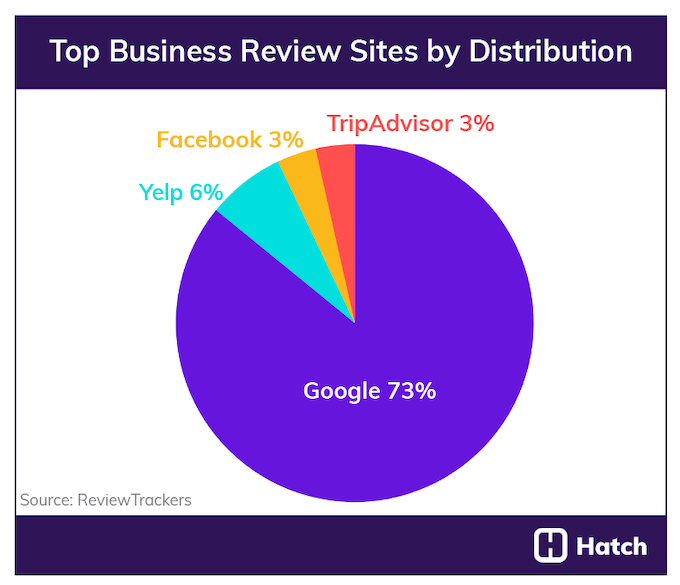
So it's important to get Google reviews, but you might be wondering why it’s really necessary to respond to Google reviews. You’re busy, why add more to your plate?
Let me explain…
Here are some reasons responding to Google reviews (both negative and positive) is worth your time.
It costs 5-7 times more to acquire a new customer than it does to retain an existing one. So you want to do all you can to address customer concerns, provide a solution, and hopefully earn their repeat business.
If you’re not responding to negative reviews on Google, you’re probably losing some opportunities to retain your customers.
In fact, 67% of people who leave reviews say they will return to a business if their review gets a speedy response. But over 60% of people who leave reviews say they’ve never received a response. That leaves a lot of room for opportunity for your home services business!

Prospective customers are reading reviews for your business. If all they see are negative reviews with no responses, they’re not getting the prettiest picture.
How you respond to negative reviews can also help you win over new customers. If they see from your response that you’re truly making an effort to rectify a mistake or that you’re willing to work with an unhappy customer, they may be more willing to work with you.
This can also go the other way. If your review response is a little defensive, unprofessional, or overall just not great, it can turn people away from your business, even if you have mostly positive reviews.
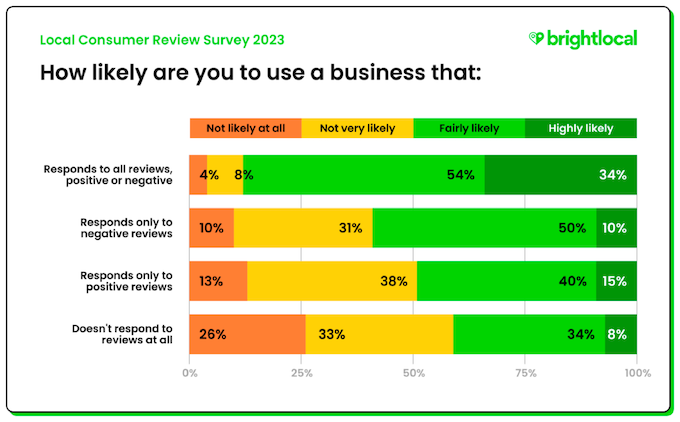
According to BrightLocal's Local Consumer Review Study, consumers are most likely to use businesses that respond to all reviews (not just positive or negative.
Responding to negative and positive Google reviews shows both current and prospective customers that you’re paying attention and you care about their feedback.
Almost all (97%!) people reading reviews will also take the time to read your responses.
53% of customers expect you to respond to reviews (within one week!). So give the people what they want!
No one wants to get a negative review. And it can feel especially personal for home services businesses. You pride yourself on your work, your teams, and what you deliver. So hearing negative feedback doesn’t feel great. But in a few simple steps, you can craft a review response that will have unhappy customers feeling positive.
These are the steps I used when responding to negative reviews for up to 120 small businesses over three years (many of them home services businesses), so I’m confident they can help you master the process!
This may seem counterintuitive to other advice you’ve read. And, yes, it is important to respond quickly (see stat above!). But not immediately.
And here’s why:
When you see a dreaded negative review on Google, you’re probably going to feel a little defensive. You might want to fast-and-furiously type up a response telling the reviewer to can it (or something more colorful) or explain all the reasons they’re wrong.
This is where we need to take a minute to digest what we’ve read and begin formulating a courteous and professional response. Let’s talk about those steps now.
Whether the negative review is short or long, read through it a few times. Is there anything that stands out to you? Are there any themes you can identify?
Some common “themes” in Google reviews for home services might be:
Getting to the root of why the reviewer is upset can help you create the best response. It shows that you’re paying attention, you understand the issue, and can give you some ideas for resolution.
When writing your review response, here are some things to include:
Here’s a real-life example of a review response that includes pretty much everything I outlined in my guidelines:
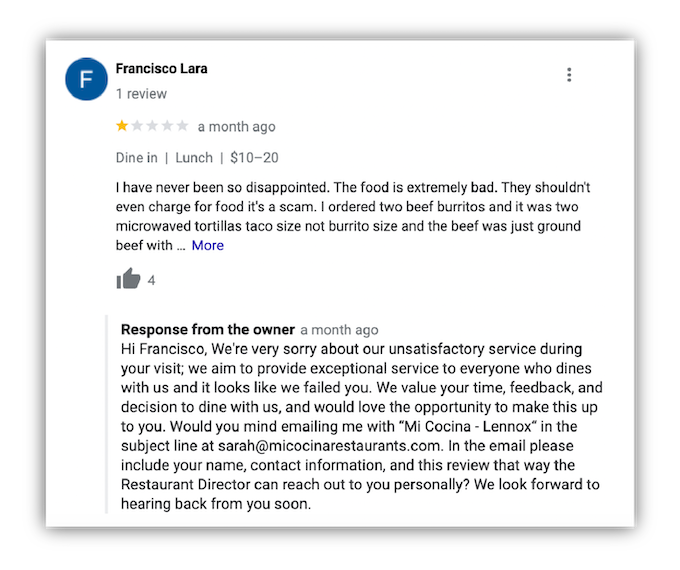
Yes, for spelling and grammar. But also do a tone check. Does your response seem measured? Professional? Like someone others would want to grab a beer work with?
Feel free to make tweaks if you feel like it still needs a little work.
Once you feel like your review response is in a good place, it’s time to publish it! We’ll walk through those steps a little later.
This is key. You can’t just talk the talk, you have to walk the walk. Meaning, you need to follow up after your review response to address the customer complaint.
Follow up promptly, be professional, and keep it cordial.
This part of the process can help you not only retain a customer but also influence them to change their review or provide an update!
Want some examples? I’ve got you!
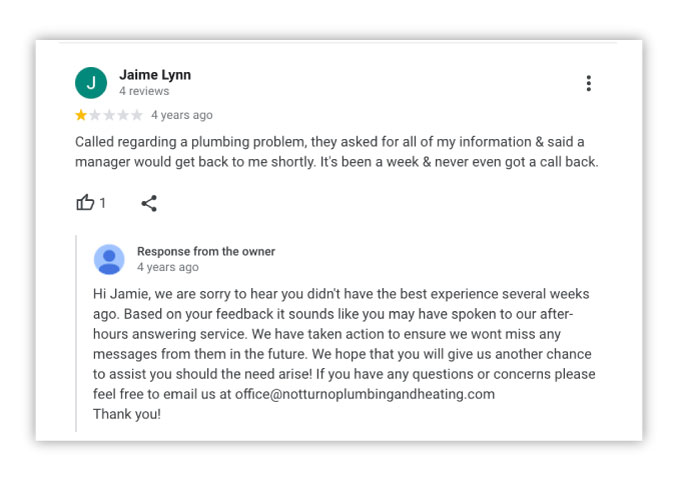
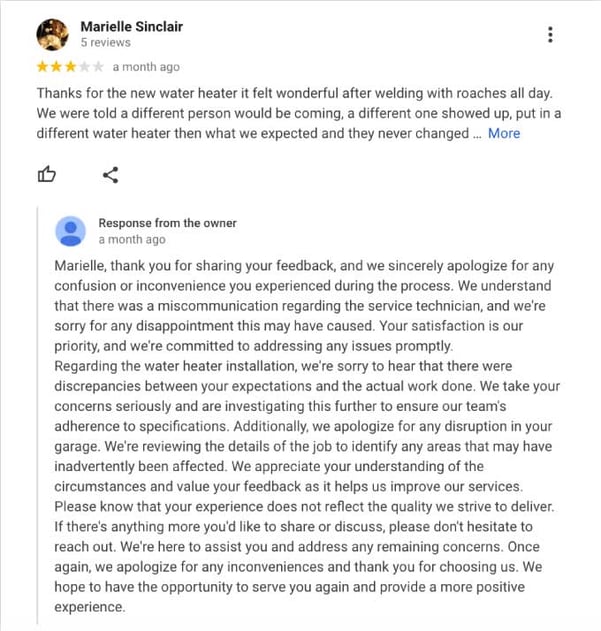
This is a much easier process because getting positive reviews is fun! Here are some tips and steps to keep in mind.
Customers are 21% more likely to leave a review after a negative experience than after a positive one, so take a moment to thank your customer for leaving their positive feedback! And for being a customer. A small word of gratitude can go a long way.
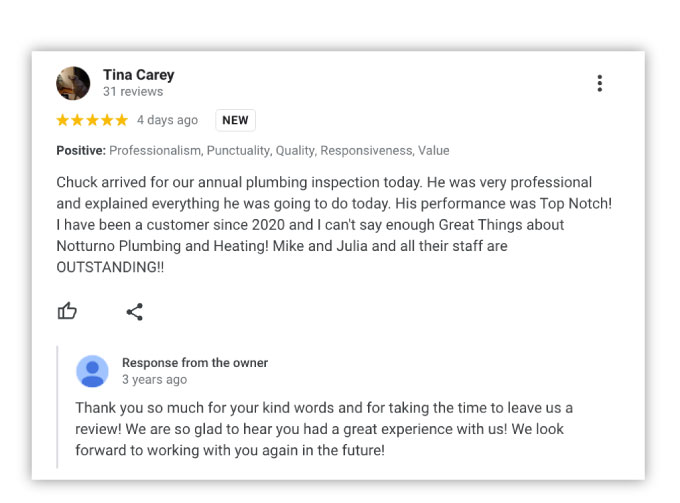
It’s fine to respond to positive Google reviews with a simple “Thank you!” But it’s nice to make it a little more personal to the reviewer. They took the time to leave you positive feedback, so take a minute to thank them personally!
You can also use positive reviews as an opportunity to further highlight positive aspects of your business.
For example, if someone leaves a review that says something like “I had such a great experience with Carl. He answered all my questions, arrived promptly, and cleaned up thoroughly after unclogging my kitchen sink. Excellent service!” You could respond with something like “Sam, thank you for the feedback! At Sink Uncloggers we’re all about making things quick and clean, so we’re so happy you were pleased with Carl’s service!”
You don’t want to get too over the top or salesy, but if they set you up a little bit, you can take your shot.
Here are some real examples of responses to positive Google reviews that you can model after:
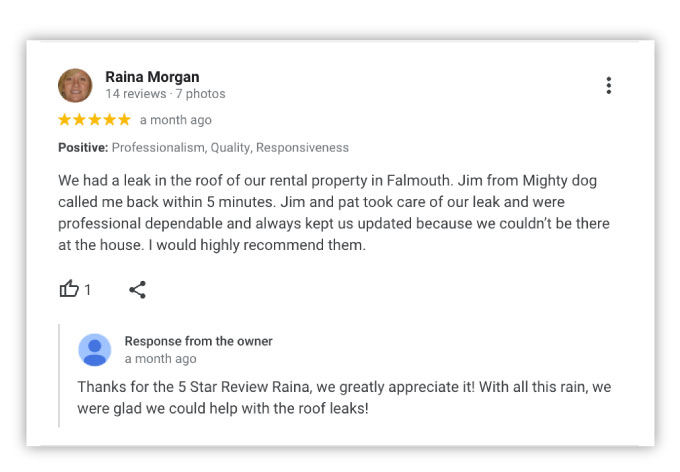
Now that you have your negative and positive review responses ready to go, how do you get them live? Follow these steps to post your response to Google reviews.
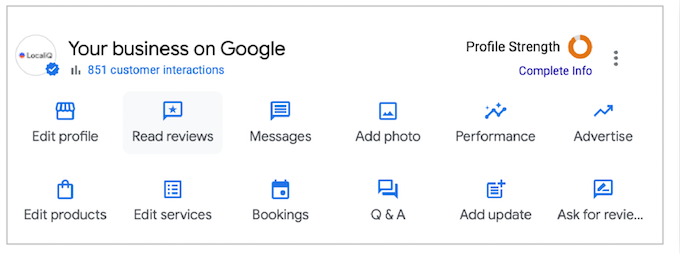
2. Click on “Read reviews.” This will pull up all the reviews for your business.
3. Click “Reply” under the review you want to respond to.

Voila! Your review response is submitted and will be displayed shortly.
There you have it: A step-by-step guide for how to respond to Google reviews–the good and the bad. By following these steps, you can become an expert in addressing customer complaints on Google as well as positive comments. Remember to respond to Google reviews quickly, address complaints offline, and deliver the best customer service possible to keep getting those positive reviews!
Learn the 18 most effective ways to get more Google reviews, with examples of how to ask for reviews, so you can improve your reputation and local...
Learn how to get more reviews on Yelp and how to respond to both positive and negative responses.
A good response to a bad review can be just as powerful as a positive review. Check out these tips on how to effectively manage poor online reviews.
Be the first to know about new sales and marketing insights to grow your messaging strategy with leads and customers.